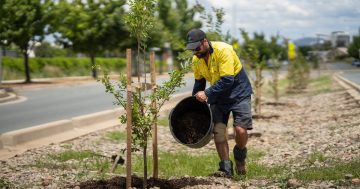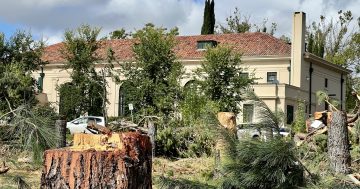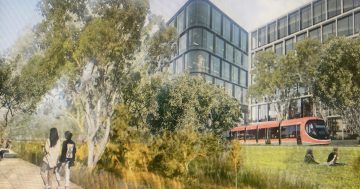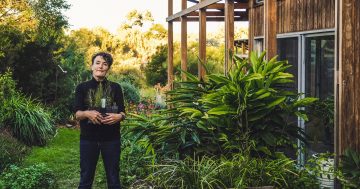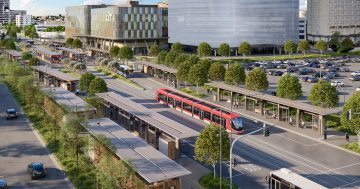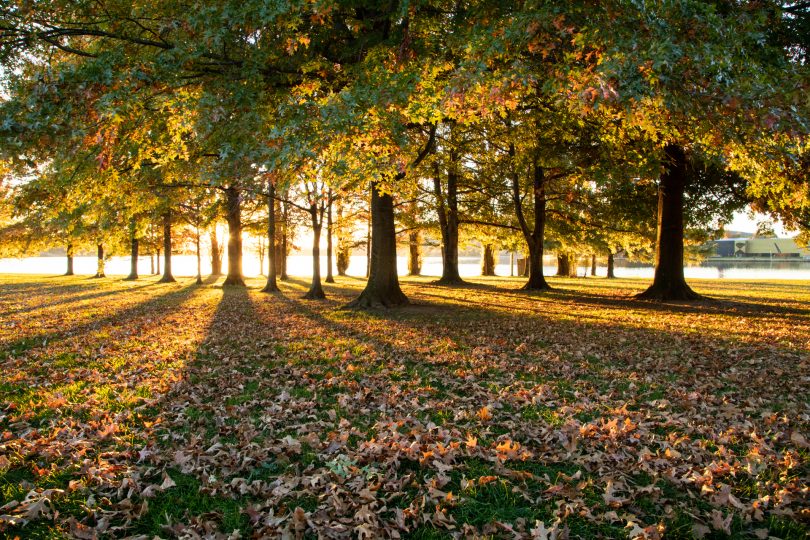
Minister for the Environment Rebecca Vassarotti says there are opportunities all over Canberra for the public to help plant 54,000 new trees by 2024. Photo: Michelle Kroll.
One of my earliest memories is exploring the banks of Ginninderra Creek with my sister, shaded by the trees on either side, climbing up them and investigating if there were any bird nests.
Anyone who spends their childhood in Canberra is likely to have an early memory similar to this because we’re so blessed with trees here. As kids we climb them, play hide and seek around them and run through piles of autumn leaves in the park.
As adults we’re more likely to appreciate how they keep our cars cool if we can find one to park under or the way they add to the beauty of a favourite vista.
As kids we probably took them for granted, like kids take so many things for granted. For Canberra kids, trees are just there and always have been.
But of course, that’s not true. They need the proper planning, nurturing, and attention to survive and thrive. Canberra’s early city planners paid a lot of attention to trees.
It was easier then, on the blank canvas of the sheep paddocks on the Limestone Plains. The population was much smaller, with housing blocks larger and more spread out and green spaces not yet filled in with big, important buildings.
Our city can’t go on spreading ever more widely across our precious natural landscapes.
Trees have often been the first casualty of increasing density and pushy development in the past.
Older trees are dying, and some of our newer suburbs risk never developing the cooling shade over the dark bitumen streets that keep summer temperatures several degrees cooler in older suburbs like Dickson.
The good news is, according to recent analysis, we’ve begun to turn the tide on this negative trend. In less than 18 months, the 10th Legislative Assembly has taken three important actions – ones that were promised in the ACT Greens election platform and formalised in the Parliamentary and Governing Agreement.
We’ve launched the draft Action Plan to prevent further loss of mature native trees across the Territory – even dead trees need preservation as nesting for birds and habitats for all sorts of creatures.
Once the community have had their say, this will continue to shape ACT government planning and land management initiatives to protect our mature native trees, both within and outside the reserve system.

Minister for the Environment Rebecca Vassarotti. Photo: Ian Bushnell.
We’ve also begun enacting legislation to protect our urban forest canopies. The draft Urban Forest Bill 2022, which strengthens and improves how we manage trees in the ACT, is on its way to becoming law.
Released by my government colleague and Minister for City Services Chris Steel, some of the important features proposed are that all trees on public land will be protected, regardless of their size or location, while trees on private land will be protected if they are 8 m or taller and have a canopy width of 8 m or more.
When trees are approved for removal on private property, they’ll need to be replaced through new planting – usually on the property the trees were removed from. Where planting new trees is not possible on the property, a contribution will need to be made to the canopy contributions fund.
These proposed laws will help protect and grow our tree canopy to reduce the urban heat island effect and retain the leafy character of Canberra.
And we’re not just doing this work from the top down, via planning and legislation, either.
We’ve increased our support for community-based planting projects and there are now more than 50 registered community groups taking part in land care and tree planting across our city.
If adopting a park or creating a neighbourhood micro-forest piques your interest, there are opportunities all over Canberra for you to get involved in planting some of the 54,000 new trees we want to put in the ground by 2024.
If you have a bigger tree planting project in mind, we have the Environment Grants and Adopt a Park grants available to grow your plans.
This is what Canberrans have told us they want – a mix of private and public tree planting so that our beautiful tree canopies remain an asset for everyone.












